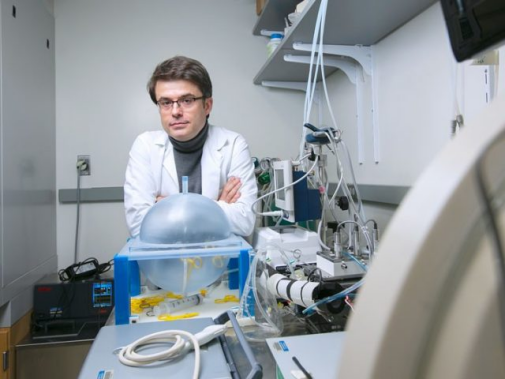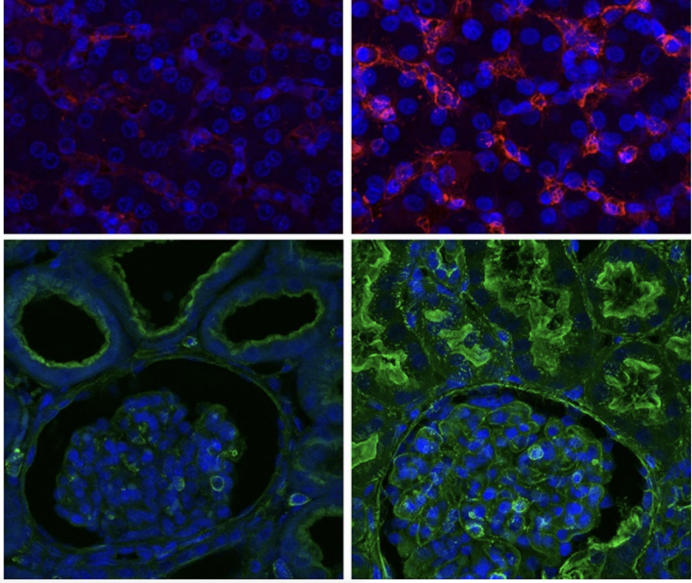Scientists "resurrected" a pig?"Nature" front page headline heavy post
Author:Medical community Time:2022.08.04

"The brain is the most prone to hypoxic organs. If some functions can be restored in the brain of dead pigs, then it can be done in other organs."
Written article | Ling Jun
Source | "Medical Community" public account
In 2019, Professor Neida Stein, a neuroscience at Yale University in the United States, released a research that shocked the academic community.
After 4 hours of death, the research team transported "nutrients" to the pig brain through a mechanical irrigation system called Brainex. The pig's brain was "resurrected". Within 36 hours, neurons and some brain cells restarted normal metabolic functions.
This study has impacted the human awareness of death. Once the brain can generate consciousness alone in vitro -even without skull wrapping, is it dead? What do you think? Or did he/her/it?
The ethical discussion on the border of life and death is far from over, and the Selstein team goes further. Today (4th), the top version of "Nature" headlines, the upgraded version of ORGANEX connects the whole body of the pig. After 1 hour of death, it restores the functions of important organs, including heart contraction and liver and kidney activity.


Needa Cessan
"Once, the head and neck of the dead pig
Start moving spontaneously "
When the heart dies, after the blood circulation and oxygen supply stop, cell damage will be caused in just a few minutes, and the "death" spreads the whole body immediately. This process is considered irreversible. But since ancient times, humans have tried to achieve "death and recovery".
With technological innovation, some studies have shown that trying to prevent and delay cell apoptosis in a certain period of time, but most of them are concentrated in single -device.
"So far, the converting single organ intervention into a systemic application is still restricted by the human cycle and multi -system operation methods." The Castein team wrote in the paper. They want to challenge this "restricted area". The new ORGANEX system used this time is controlled by computer, and the main components include pumps, oxygen and hemodialysis devices.
After dissolving oxygen, artificial blood was pumped into the whole body of the pig. This is a solution composed of 13 ingredients such as animal autologous blood and anticoagulants. Chemical process of apoptosis. The pump of artificial blood imitates the rhythm of heart beating, and hemodialysis devices are connected to the main circuit.


ORGANEX system
After obtaining ethical approval, the team first carried out deep anesthesia of the pig, and then used an electric shock to induce the pig's heart to stop jump. One hour after death, some pigs connected to the Organex system, and the other part used the traditional ECMO or did not do any treatment for the effect comparison.
After 6 hours, researchers found that the effect of "ORGANEX pigs" was much better compared to pigs who received ECMO or unprepared pigs. The oxygen began to flow to the whole body tissue of the pig, and the heart scan detected the electrical signal and contraction.
In addition, the cells of "ORGANEX pigs" are smaller, and the liver has obvious albumin. The kidney proliferation has occurred, and the integrity of cells and tissues in some areas of the brain has also been guaranteed. What is even more surprising is that in all important organs of "Organex pigs", the response of cells to glucose is much stronger than other groups, indicating that the metabolism has been launched.


The left side is the image of the liver (above) and kidney (below) cell image of the pig; the image corresponding to the "Organex pig" on the right shows that some tissue integrity and certain cell functions are restored.
The response to cell function and repair in the organs is also more active. "Even once, the pig's head and neck began to move spontaneously, which indicates that some exercise functions have been restored." Further investigation.
Can the dead brain be "resurrected" again?
"The brain is the most susceptible organ. If you can restore certain functions in the brain of dead pigs, you can do it in other organs." Professor Sistan said.

"Nature" front page headline
Since the beginning of the 20th century, scientists have tried to keep the brain and pump into the blood or pump into blood, so that the brain still maintains vitality after the heart stops. Some studies have also found that the cells in the brain tissue sliced after death can survive for several weeks and do some normal activities, such as making protein.
But can the dead brain be resurrected again?
In the research released in 2019, Professor Selstein purchased 32 pork heads from slaughtering houses, and took the brain out of the skull to connect to the BRAINEX system. After 4 hours of death, the system started to simulate blood flow, and "nutrients" were injected into the cerebral vein and arteries.
After 6 hours of continuous injection, the research team discovered that the neurons of the pig brain and some brain cells restarted normal metabolic functions, such as consumption of sugar, producing carbon dioxide, and the immune system seems to play a role. At the same time, the death of cerebral cortex cells is significantly less than the control group. When researchers applied current of the tissue samples of the brain, they find that a single neuron can still carry signals.
Although there is still a long distance from the recovery brain activity, to some extent, the pig brain has achieved "death and rehabilitation". 4 hours before the BRAINEX system opened, the dead pig's brain did not accept oxygen, glucose or any other nutrients.
In the next three years, Professor Selstein's team improved the Brainex system. Compared with the "tailor -made" for the brain, the upgraded version of Organex system is suitable for systemic organs. "Considering how fast the speed of 'death" is, this result is amazing. "Today," Nature "reported on the front version of the headline that Professor Farahany, a neurosenator at Duke University in the United States, believes that if there is one day, it can be copied in the human body one day in the human body. And improve this technology, which is used to save or even recover transplantation, which will completely change the situation of shortage of transplant organs.
What does the brain feel in vitro recovery?
"Most of the time in human history, the awareness of death is very simple." Professor Christof Koch, chief scientist of the Institute of Brain Science, Seattle, said in an interview with "Nature", "Now, we must question what ' irreversible."
In fact, whether it is 2019 or the latest research, the research team prepares anesthesia and neuron blocking agents in the irrigation system to stop immediately when the brain may recover consciousness.
No one knows what will the brain feel in the remains, and even in vitro recovery consciousness? What do you want? The current medical ethics is obviously not ready to deal with this situation. "But as far as the research results itself is concerned, it is far from the level of challenge the concept of" death "." Professor Zhu Tongyu, deputy dean of Fudan University Shanghai Medical College, analyzes the "medical community".
As an expert in the field of kidney transplantation in China, Professor Zhu Tongyu has nearly 20 years of research on the preservation and irrigation technologies such as the preservation and irrigation of the body. He told the "medical community" that after the cells re-injected the blood in the body to try to maintain or recover, the cells were injected into the body, and the ischemia-reinforcement injury would occur under the action of the oxidation pressure and some factors in the blood.
"Therefore, traditional cold irrigation is not blood, but a storage solution similar to the ingredients in the cell." Professor Zhu Tongyu said, "In recent years, we have further used the mechanical irrigation system. The cycle allows the toxic substances in the body cells to be cleared more thorough. "
Professor Zhu Tongyu believes that the principle of this research is not "revolutionary", but the biggest clinical significance is that perhaps in the future, the number of organs for transplantation can be significantly increased in the future. "For the remains of the body, we generally give up for more than half an hour. If the new technology can be copied to the human body, this window period will be greatly extended."
In 2019 and the latest research, the death of pigs was 4 hours and 1 hour, respectively. Professor Zhu Tongyu analyzed that, in addition to the improvement of the mechanical irrigation system, the infrastructure ratio of the team developed by the team may be the most critical factor.
"As the research continues, there may be hope to restore some brain function slightly, such as brain stem breathing center function. But fully brain recovery and consciousness, I don't think it can be done now." Professor Zhu Tongyu said. Professor Sistein also said that neither testing in the two trials observed electrical motion related to perception and consciousness. Strictly speaking, this is not a living brain, but an active brain of cells.
But maybe, ethical discussions should be realized first.
After the Pig Brain Test was released in 2019, Professor Christof Koch publicly called for a wider ethical discussion before the realization of the "no physical brain" to produce awareness. "Because once humans do it, it is impossible to reverse it."
Source: Medical Community
Responsible editor: Zheng Huaju
School pair: Zang Hengjia
- END -
Thousands of micro -grid grids in the job information collection full coverage

From July, Shaxian District has launched a month -long Thousands of Grid (Police A...
Dongxiang County: Provide on -site service for the elderly for inconvenience to the elderly

In order to effectively block the risk of the diffusion of the epidemic, on July 1...